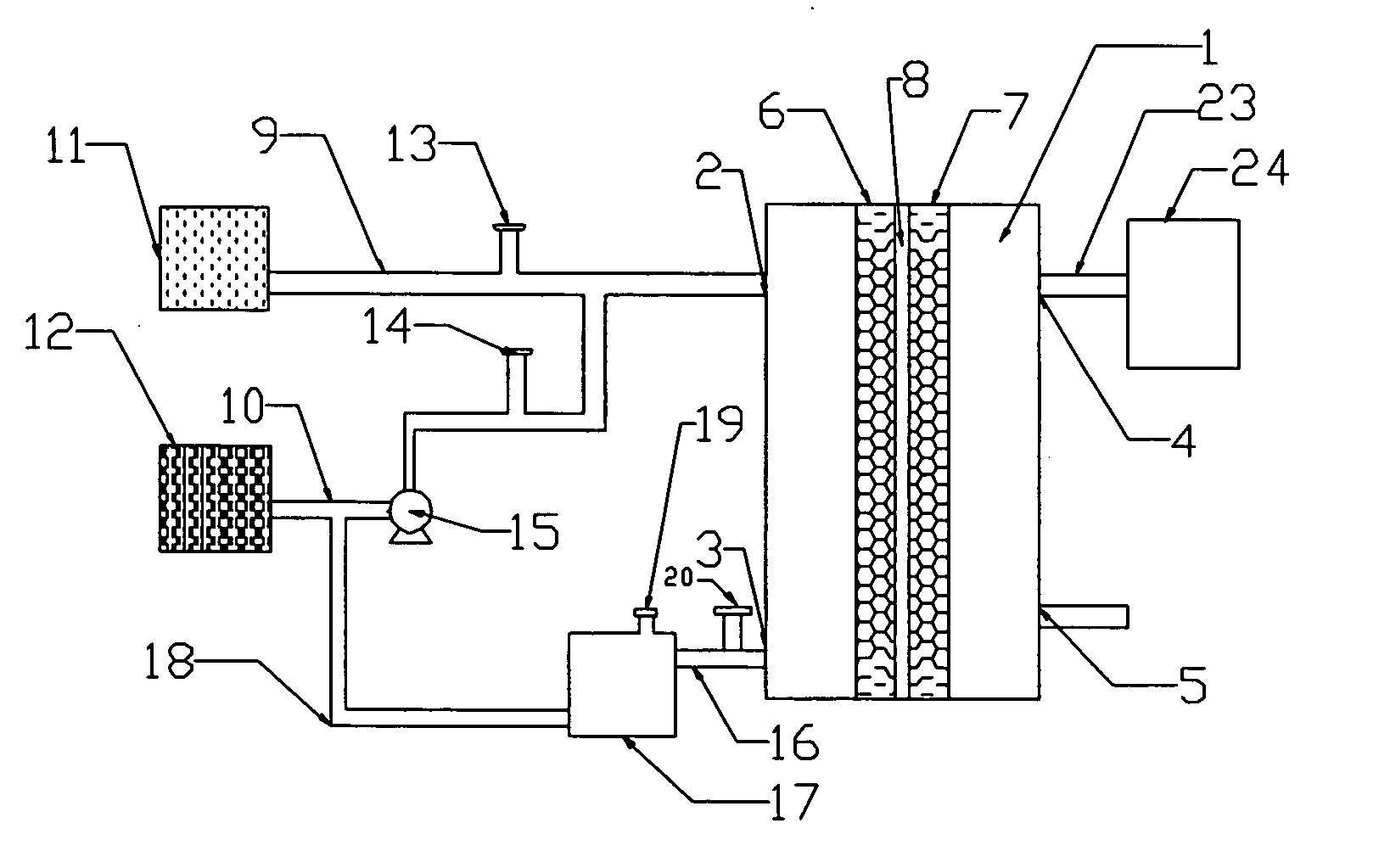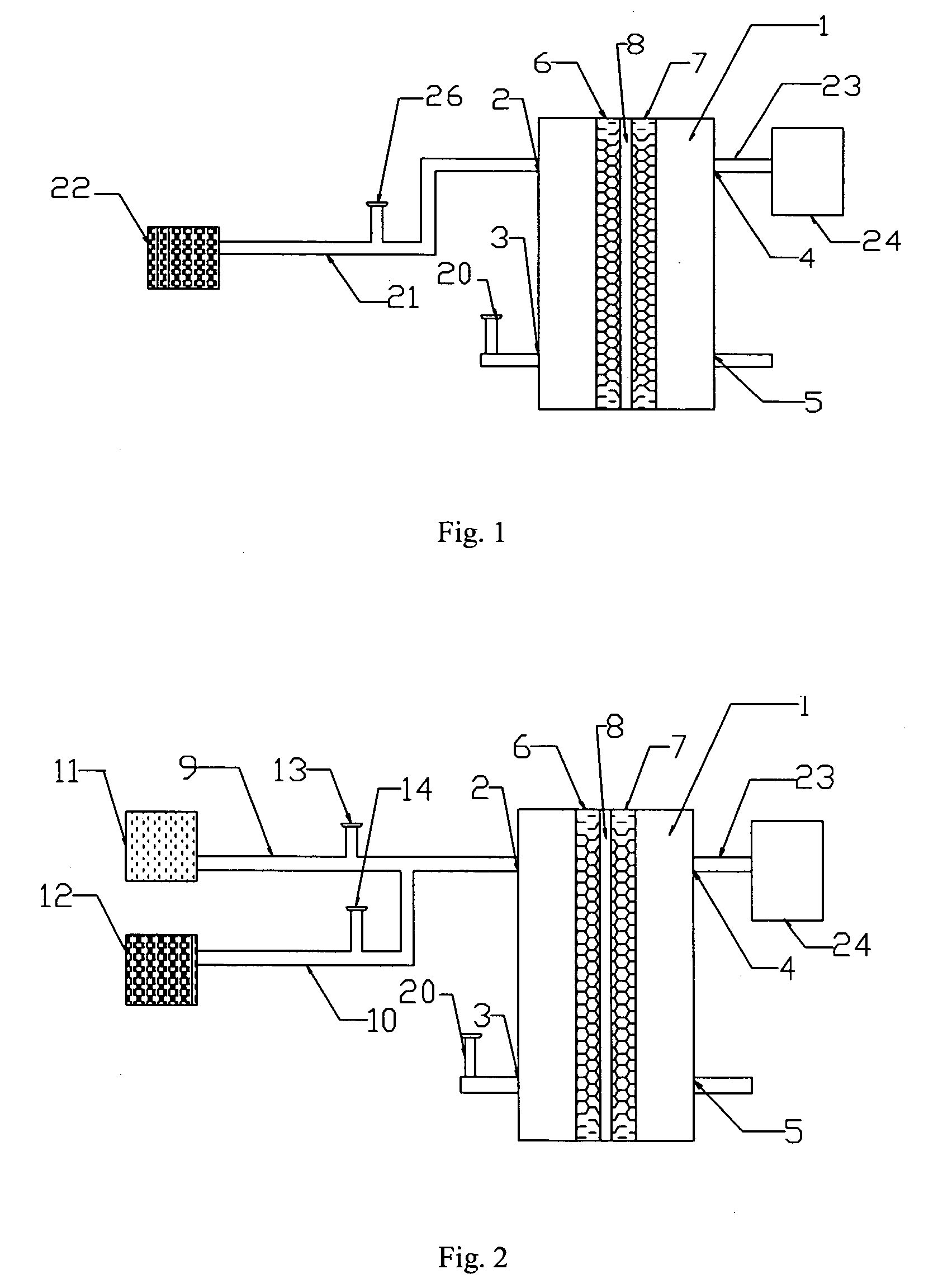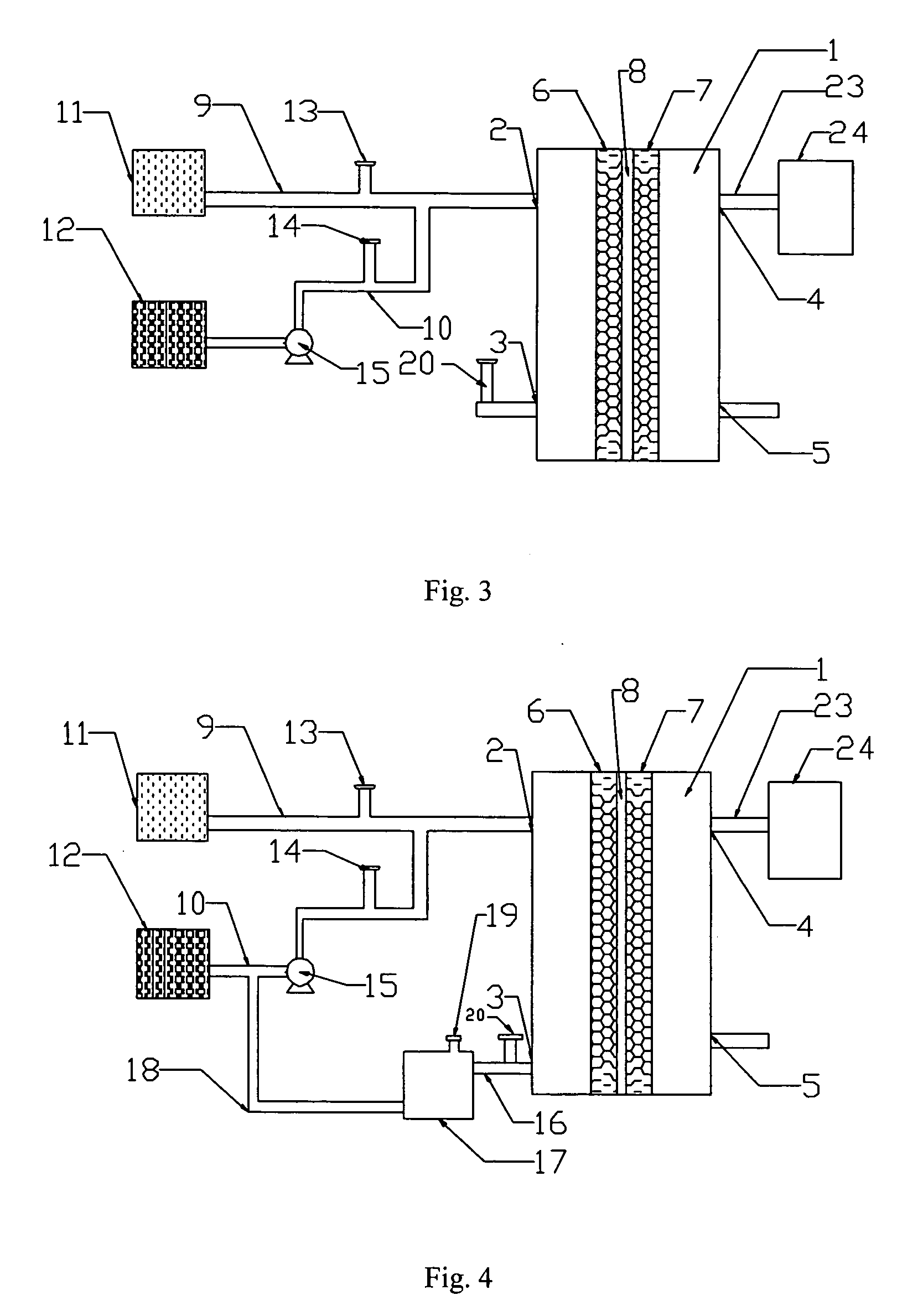Type of fuel cell battery
a fuel cell and battery technology, applied in the field of fuel cell batteries, can solve the problems of increasing the manufacturing cost of the fuel cell, the ineffectiveness of the platinum catalyst with organic fuel, and the use of costly metals in the catalyst, such as platinum, so as to avoid the disadvantages of low density efficiency, and reduce the cost of catalyst poisoning
- Summary
- Abstract
- Description
- Claims
- Application Information
AI Technical Summary
Benefits of technology
Problems solved by technology
Method used
Image
Examples
embodiment 1
[0048] The following embodiment illustrates a battery of this invention.
[0049] The battery is shown in FIG. 2.
[0050] In FIG. 2, oxidant (24) is an air compressor, and duct (23) is a silicone duct with a diameter of 3 mm.
[0051] The active area of the cell is 6 cm2. The supporting material of anode (6) is carbon fiber. The catalyst of anode (6) is the platinum-and-ruthenium-over-carbon catalyst product of the J-M Company. In the catalyst, platinum constitutes 20% of the weight percentage, and ruthenium 10% of the weight percentage. The density of platinum and ruthenium is 4 mg / cm2. The current collector on the external side of anode (6) is made of graphite material.
[0052] The current collector on the external side of cathode (7) is made of graphite material and the supporting material is carbon fiber. The catalyst of cathode (7) is the platinum-over-carbon catalyst product of the J-M Company. In the catalyst, platinum constitutes 40% of the weight percentage. The density of platin...
embodiment 2
[0054] The following embodiment illustrates a battery of this invention.
[0055] The battery is equipped as shown in FIG. 3.
[0056] In FIG. 3, oxidant (24) is an air compressor, and duct (23) is a silicone duct with a diameter of 3 mm.
[0057] In FIG. 3, the active area of the cell is 20 cm2. The current collector on the external side of anode (6) is made of stainless steel. The supporting material of the anode is carbon fabric. The catalyst of the anode is the platinum-and-ruthenium-over-carbon catalyst product of the J-M Company. In the catalyst, platinum constitutes 30% of the weight percentage, and ruthenium 15% of the weight percentage. The platinum and ruthenium density is 3 mg / cm2. Proton-exchange membrane (8) is the Naflon117 membrane of the DuPont Company.
[0058] The supporting material of cathode (7) is carbon fabric. The catalyst of cathode (7) is the platinum-over-carbon catalyst product of the J-M Company. In the catalyst, platinum constitutes 20% of the weight percentage...
embodiment 3
[0061] The following embodiment illustrates a battery of this invention.
[0062] The battery is equipped as shown in FIG. 4.
[0063] In FIG. 4, oxidant source (24) is an air compressor, and duct (23) is a silicone duct with a diameter of 3 mm.
[0064] In FIG. 4, the active area of the cell is 50 cm2. The current collector on the external side of anode (6) is made of titanium. The supporting material of the anode is carbon fabric. The catalyst of the anode is the platinum-and-ruthenium-over-carbon catalyst product of the J-M Company. In the catalyst, platinum constitutes 30% of the weight percentage, and ruthenium 30% of the weight percentage. The density of platinum and ruthenium is 4 mg / cm2. Proton-exchange membrane (8) is the Nafion117 membrane of the DuPont Company.
[0065] The supporting material of cathode (7) is carbon-fiber paper. The catalyst of cathode (7) is the platinum-over-carbon catalyst product of the J-M Company. In the catalyst, platinum constitutes 40% of the weight pe...
PUM
| Property | Measurement | Unit |
|---|---|---|
| length | aaaaa | aaaaa |
| inner diameter | aaaaa | aaaaa |
| inner diameter | aaaaa | aaaaa |
Abstract
Description
Claims
Application Information
 Login to View More
Login to View More - R&D
- Intellectual Property
- Life Sciences
- Materials
- Tech Scout
- Unparalleled Data Quality
- Higher Quality Content
- 60% Fewer Hallucinations
Browse by: Latest US Patents, China's latest patents, Technical Efficacy Thesaurus, Application Domain, Technology Topic, Popular Technical Reports.
© 2025 PatSnap. All rights reserved.Legal|Privacy policy|Modern Slavery Act Transparency Statement|Sitemap|About US| Contact US: help@patsnap.com



